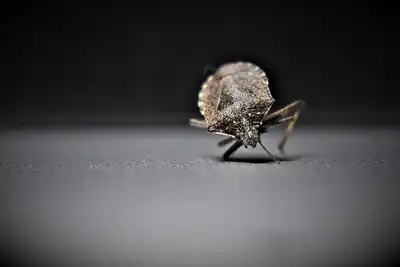How to Check for Bed Bugs: A Guide for the Uninitiated

Bed bugs are a lot less creepy once you know what they look like. These small, oval-shaped insects are very good at hiding, and that makes it even more important to check your bed before you leap into it. A bed bug inspection should include checking the seams of pillows and mattresses for bed bug hatchlings and eggs. If you think you have a bed bug problem, there are also steps you can take to prevent them from coming back. Here’s what you need to know about spotting and checking for bed bugs:
When to check for bed bugs
The best time to check for bed bugs is when you first suspect a problem. Young bed bugs are very small, so they’re easy to miss — and even adult bed bugs might be hiding somewhere you didn’t expect. If you think you have bed bugs, you should inspect your bed before you put your head on the pillow. Another good time to check for bed bugs is when you move into a new place. Bed bugs can travel to new homes by hitching a ride with people or furniture, so it’s important to inspect your surroundings carefully. If you’ve had problems with bed bugs in the past, you should check for them every few months to make sure they haven’t come back. Bed bugs have a reputation for being difficult to get rid of, so it’s best to stay vigilant.
How to check for bed bugs
First, inspect your bed for signs of bed bugs. Look for dark spots on the mattress or sheets, small black dots that look like tiny grains of pepper, or a strong musty smell. If you see any signs of bed bugs, you’ll also want to check for their eggs, or “nits.” Nits are smaller black dots, and you’ll often find them along the seams of your mattress or bed sheets. If one of your pillows has a dark mark on it, you can cut open the seam to check for bugs. You can also put the pillow in a plastic bag and leave it outside for a few days. Bed bugs will usually migrate to the top of the pillow and make their way out through the seam, making them much easier to spot.
Where you’ll find bed bugs
Bed bugs like to hide near you while you sleep. They might be behind your headboard, in your mattress, or in your sheets. If you’ve had bed bugs in the past, you should check all of these places for signs of bed bugs. Bed bugs love to hide in the creases of your mattress, so you’ll want to make sure to check along the folds and seams where the fabric is stitched together. You can also lift up your mattress and look for bed bugs along the bottom or in the corners of your bed frame. Bed bugs might also be hiding in your sheets. You can check the seams of your pillows and also lift up your sheets and check for eggs or small black dots. You can also check along the hem of your sheets, where they’re sewn together.
Bed bug identification
Bed bugs are oval-shaped insects that are typically dark red or brown, though they can sometimes be black or grey. They feed on human blood and will bite any part of the body that is uncovered while sleeping. Bed bugs, which are not known to transmit diseases, are a very difficult pest to get rid of. While bed bugs can be seen with the naked eye, finding them is often difficult as they try to hide as soon as they sense movement around them. Bed bugs can be found in areas where people sleep, rest or sit for extended periods of time. Bed bugs have been known to inhabit places like movie theatres, libraries, recreational facilities, hotels and dormitories.
The problem with checking for bed bugs
It’s important to recognize that bed bugs don’t always leave visible signs. In many cases, bed bugs cause allergic reactions in people, making their presence more difficult to detect. Bed bugs don’t always leave visible signs, so it’s important to check for their eggs, or “nits.” Nits are smaller black dots, and you’ll often find them along the seams of your mattress or bed sheets. Bed bugs leave behind small black droppings that look like black pepper. If you see black specks on your sheets or mattress, it could be signs of bed bugs or another pest like fleas. It’s also important to note that bed bugs aren’t the only pests that leave behind small black dots. Black mould and other pests will also leave behind small black droppings. It’s important to be sure that you’re aware of the signs of bed bugs and what those signs might mean for your health.
Bottom line
It’s important to check for bed bugs before you go to sleep. Bed bugs don’t always leave visible signs, so it’s important to check for their eggs, or “nits.” You can also cut open the seams of your pillows to check for bugs. If you think you have bed bugs, it’s important to take action right away. It can be very difficult to get rid of bed bugs, so it’s important to approach the problem as soon as you notice a problem.